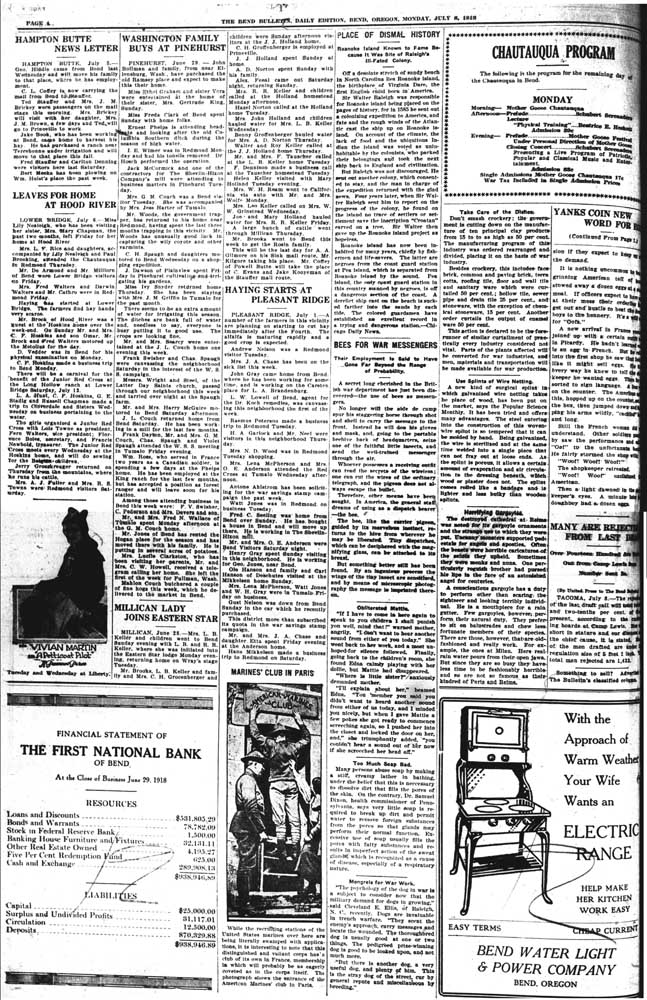The Bend Bulletin, Daily edition, Bend, Oregon, MONDAY, JULY 8, 1918
Published 12:00 am Sunday, July 15, 2018

- The Bend Bulletin, Daily edition, Bend, Oregon, MONDAY, JULY 8, 1918
THE TRAGEDY.
All Bend was shocked at the news from Crescent lake last night telling of the unfortunate and untimely end of two of the city’s prominent and successful young men. No words can make good the loss to the two bereaved and suffering families nor give her sun again to the invalid mother. Sympathy, however, may in slight measure help them to bear their burdens, and that they have from all.
MAKE HAY IN SUN;
CURE IN THE SHADE
_
Hay Should Be Put in Stack or Barn Soon After It Is Sufficiently Cured.
_
OREGON AGRICULTURAL COLLEGE, Corvallis, July 8. -— The old addage, “Make hay while the sun shines,” still holds true, but to this should be added: “Cure in shade or partial shade.” Hay should be put into stack or barn as soon as possible after being sufficiently cured. Usually hay will keep when the stems, being tightly twisted, show no moisture.
It is often practically impossible to follow ideal methods, but the closer one can approach these methods the better hay will be secured and the greater returns will be had for it through dairy herds, according to E.B. Fitts, associate professor of dairy and animal husbandry in the Oregon Agricultural college.
“Unfortunately, weather cannot be made to order and the haymaker is often caught by showers or storms,” said Professor Fitts. “Under these conditions hay caps often save serious losses. The more valuable nutrients in hay are soluble in water and a heavy rain if long continued may reduce its feeding value 50 per cent. The caps are made from unbleached muslin one yard square. The corners may be fastened with wooden pegs stuck into the hay. The pegs may be notched to give them a better hold on the hay and they are fastened to the cloth with a strong twine. This method of fastening is preferred to the weights by many persons.
“A hay cap will adequately protect a cock containing 150 to 200 pounds of hay and its cost may easily be saved during a single storm.
“Quality in hay and other roughage must be had. Dairy products must be produced more largely from these cheaper and more bulky feeds. A light green color, the presence of leaves and other finer parts and pleasing aroma are indications of quality. Whether buying hay or producing your own, see that it carries these qualities. It means better health for your cows and milk and butter fat at less cost.”
_
“DESCHUTES GOLD” IS
SELECTED FOR BUTTER
_
“Deschutes Gold” is the winning entry in the competition for the best name for the product of the Central Oregon Farmers’ Creamery company. Madge Ferrell suggested this name and by the decision of the judges becomes entitled to the prize of a war savings stamp. There were 36 names suggested in all.
The judges who made the award were L.M. Foss,







